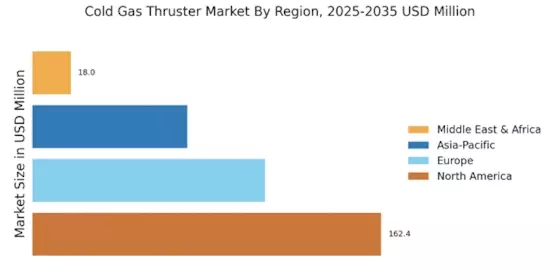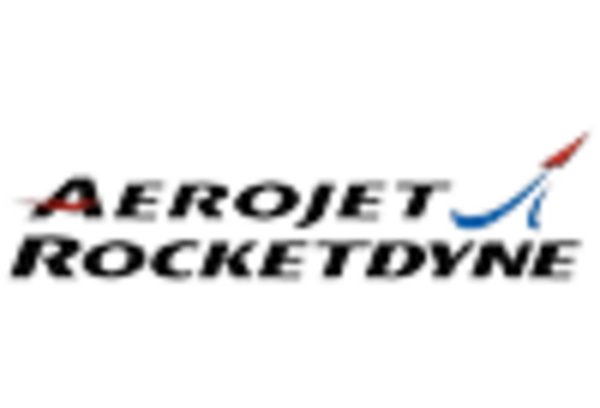Rising Demand from the Defense Sector
The Cold Gas Thruster Market is significantly influenced by the rising demand from the defense sector. Military applications require propulsion systems that offer precision and reliability, particularly in unmanned aerial vehicles (UAVs) and missile systems. Cold gas thrusters are increasingly being integrated into these platforms due to their ability to provide controlled thrust without complex mechanisms. Recent reports suggest that defense budgets are allocating more resources towards advanced propulsion technologies, with an estimated increase of 10% in procurement for UAV systems. This trend is likely to bolster the Cold Gas Thruster Market, as defense contractors seek to enhance the capabilities of their platforms while ensuring operational efficiency and mission success.
Focus on Miniaturization and Portability
The Cold Gas Thruster Market is also driven by a growing focus on miniaturization and portability of propulsion systems. As industries seek to develop smaller and more agile platforms, the demand for compact thrusters has surged. Cold gas thrusters, known for their lightweight and simple design, are particularly well-suited for applications in small satellites and micro aerial vehicles. The trend towards miniaturization is expected to propel the market forward, with projections indicating a potential market expansion of 12% in the next few years. This shift not only enhances operational flexibility but also aligns with the increasing need for versatile propulsion solutions in various sectors, including telecommunications and environmental monitoring.
Increasing Applications in Space Exploration
The Cold Gas Thruster Market is witnessing a notable increase in applications within the realm of space exploration. As nations and private entities invest heavily in space missions, the demand for reliable propulsion systems has escalated. Cold gas thrusters are particularly favored for their simplicity and reliability in maneuvering spacecraft. For example, NASA's recent missions have utilized cold gas thrusters for attitude control, highlighting their effectiveness in maintaining spacecraft orientation. The market is projected to grow at a compound annual growth rate of around 8% over the next five years, driven by the need for efficient propulsion solutions in satellite deployment and interplanetary exploration. This trend indicates a robust future for the Cold Gas Thruster Market as it aligns with the expanding ambitions of space agencies and commercial spaceflight companies.
Technological Innovations in Cold Gas Thruster Market
The Cold Gas Thruster Market is experiencing a surge in technological innovations that enhance performance and efficiency. Recent advancements in materials and design methodologies have led to the development of more compact and lightweight thrusters. These innovations are crucial for applications in aerospace, where weight reduction is paramount. For instance, the integration of advanced computational fluid dynamics in the design process has improved thrust efficiency by approximately 15%. Furthermore, the introduction of smart thruster systems, which utilize real-time data for performance optimization, is likely to reshape operational protocols in various sectors. As these technologies evolve, they are expected to drive the Cold Gas Thruster Market towards greater adoption, particularly in unmanned aerial vehicles and satellite propulsion systems.
Environmental Regulations and Sustainability Initiatives
The Cold Gas Thruster Market is increasingly shaped by environmental regulations and sustainability initiatives. As industries face pressure to reduce their carbon footprint, cold gas thrusters are emerging as a viable solution due to their eco-friendly characteristics. Unlike traditional propulsion systems, cold gas thrusters utilize inert gases, which minimizes harmful emissions. Regulatory bodies are promoting the adoption of cleaner technologies, and this is likely to drive demand for cold gas thrusters in various applications, including aerospace and marine. The market is anticipated to grow as companies align their operations with sustainability goals, potentially leading to a market growth rate of 9% over the next five years. This trend underscores the Cold Gas Thruster Market's role in supporting environmentally responsible practices across multiple sectors.


















Leave a Comment